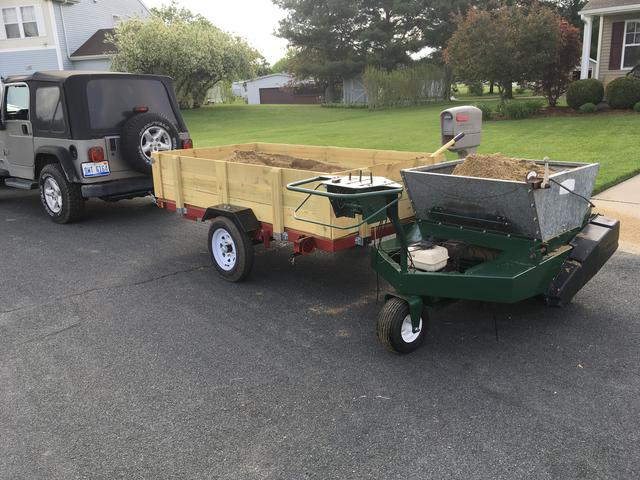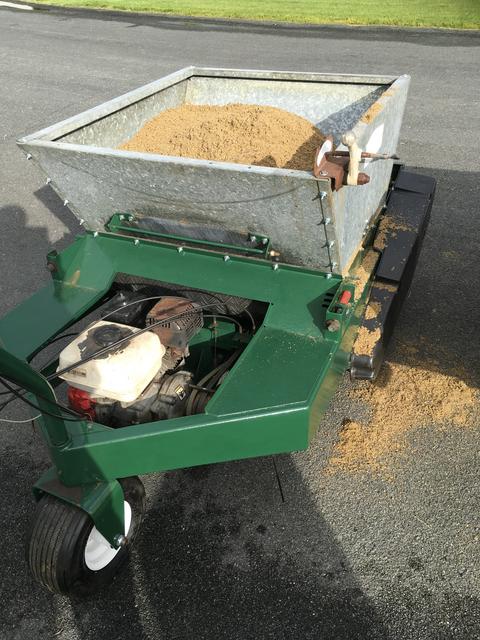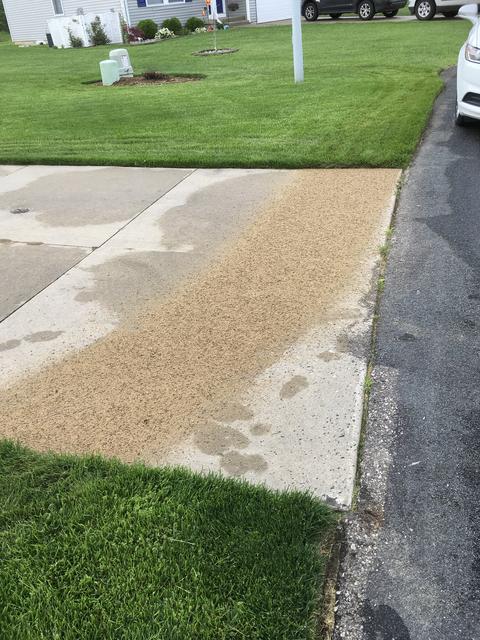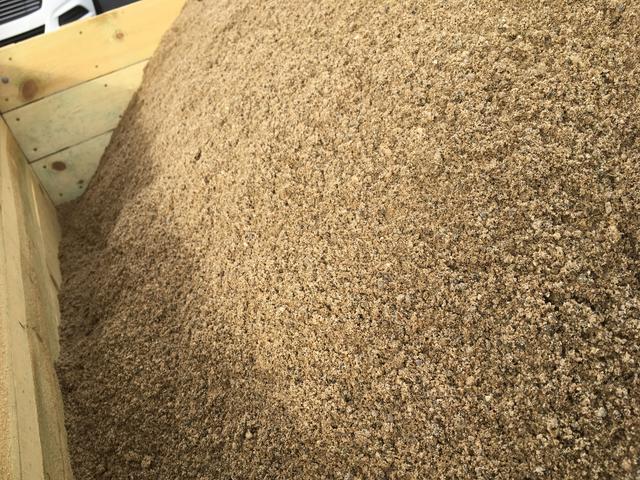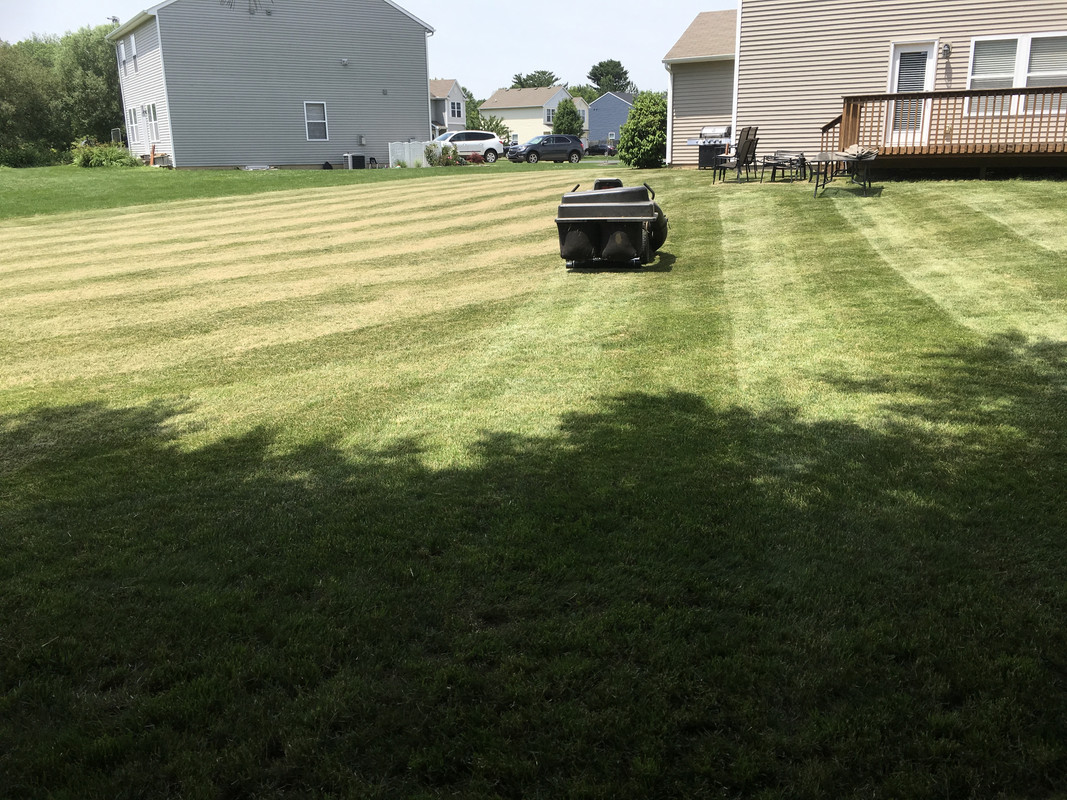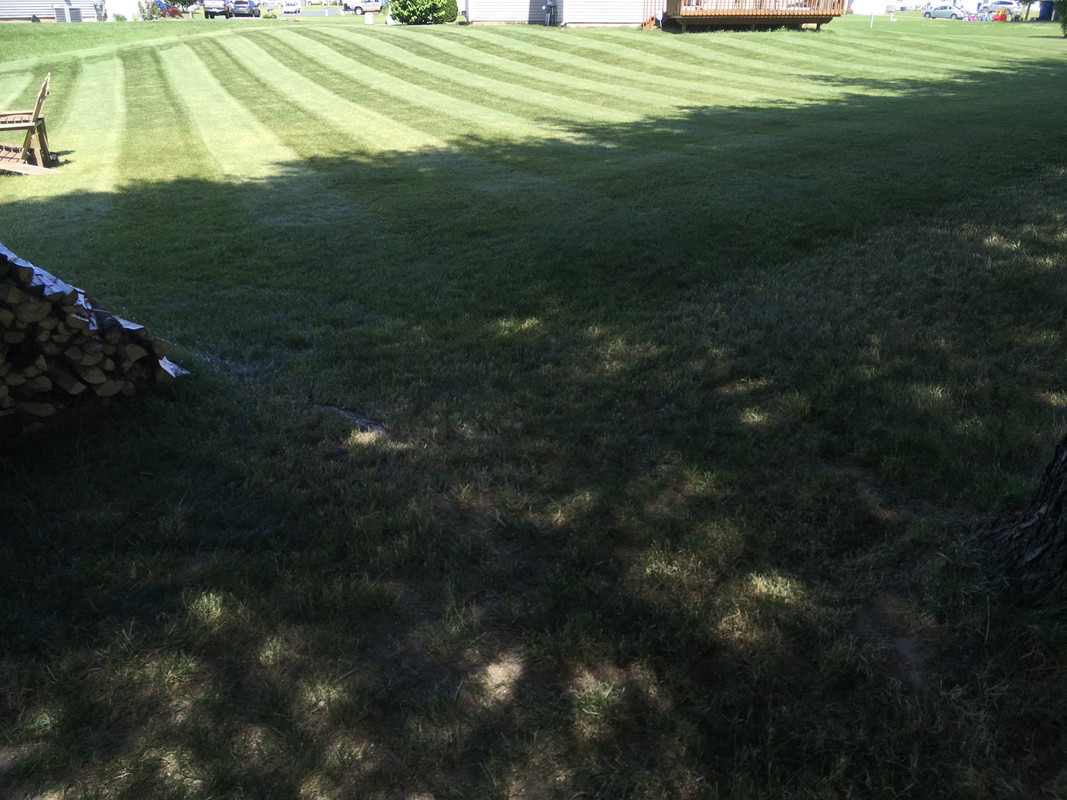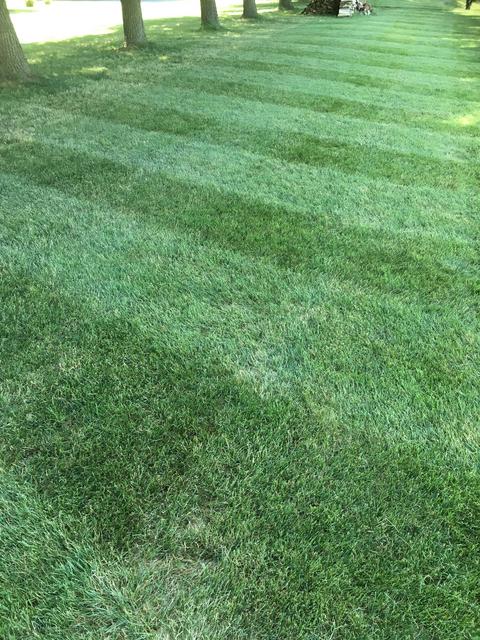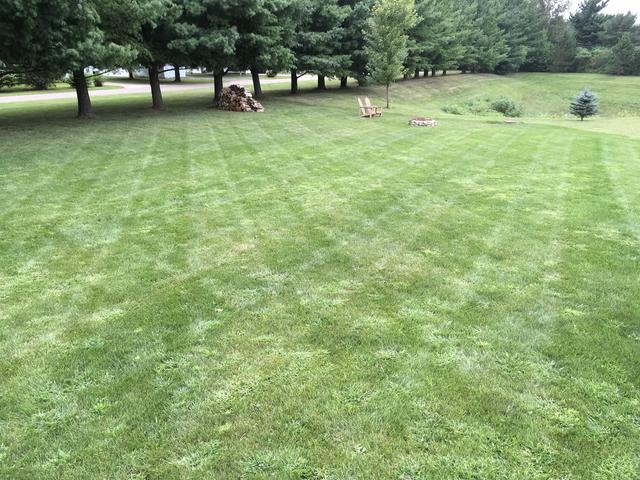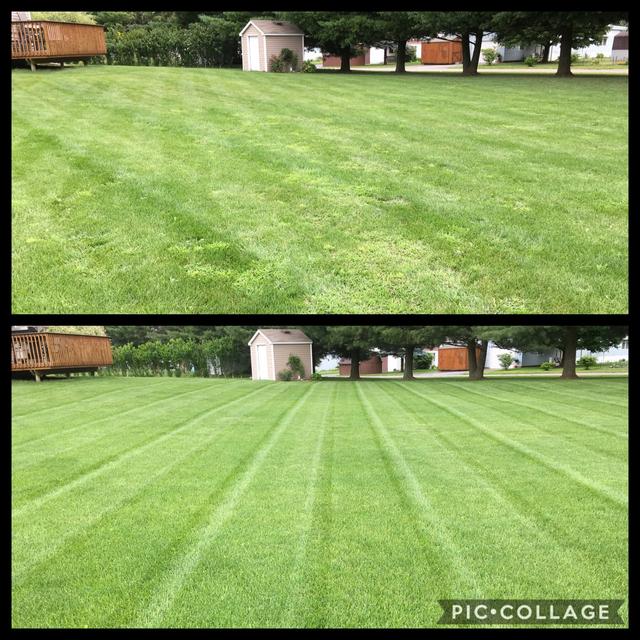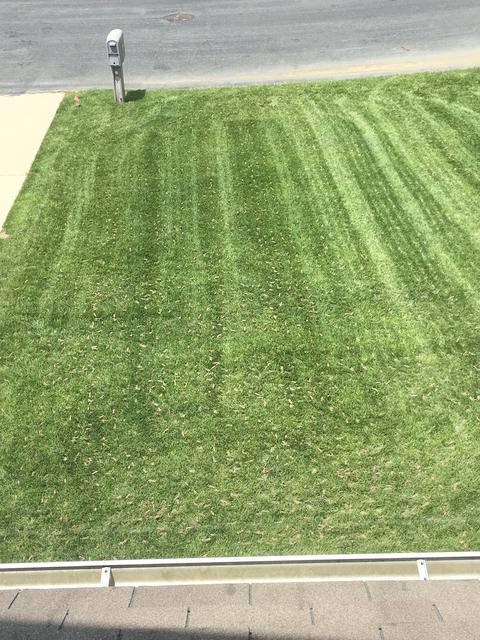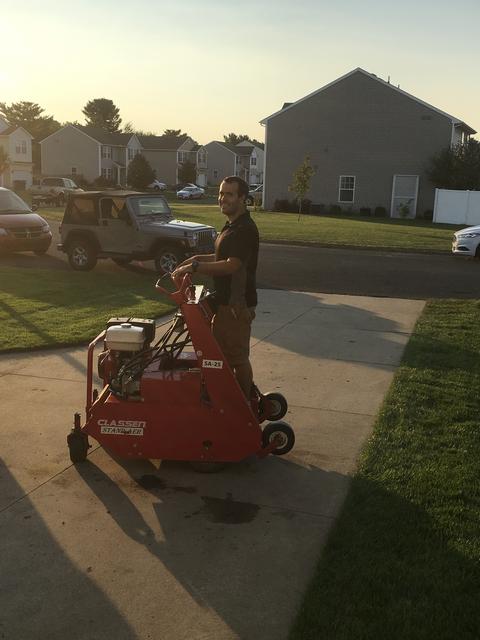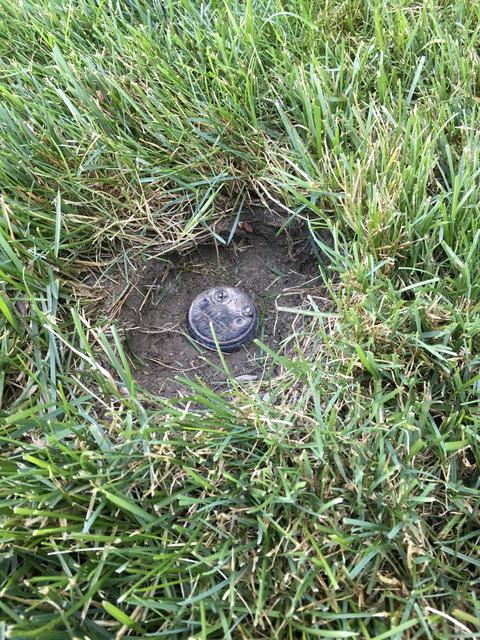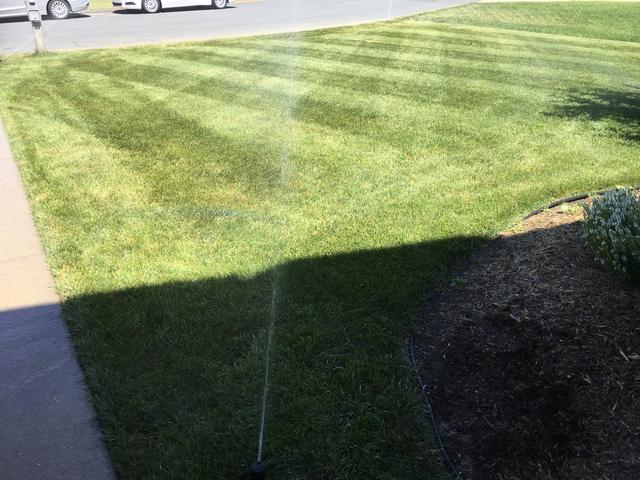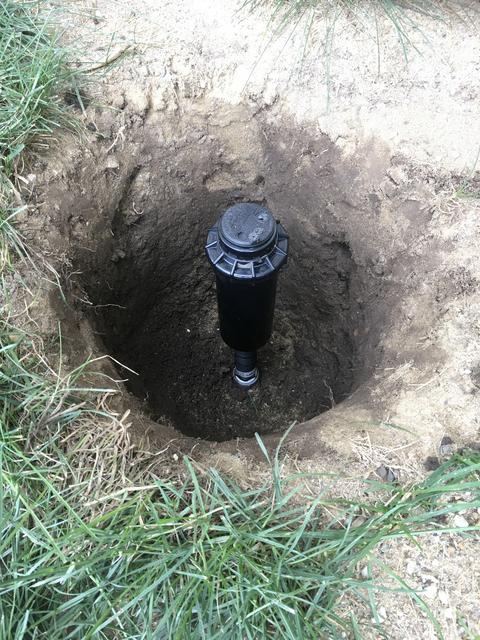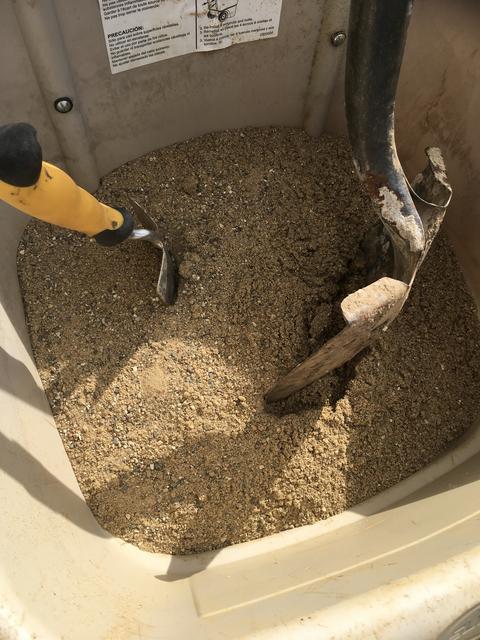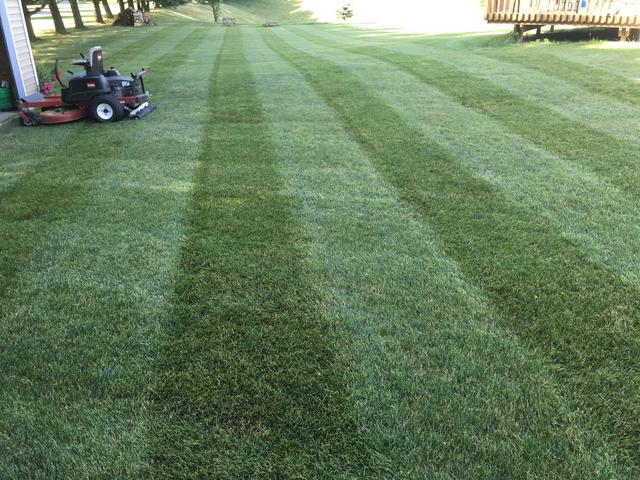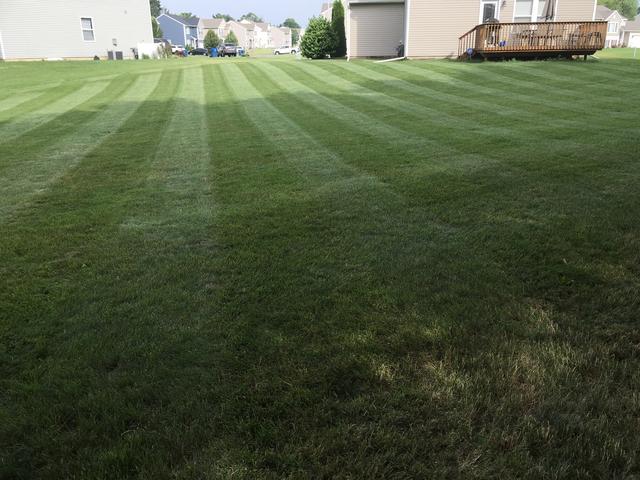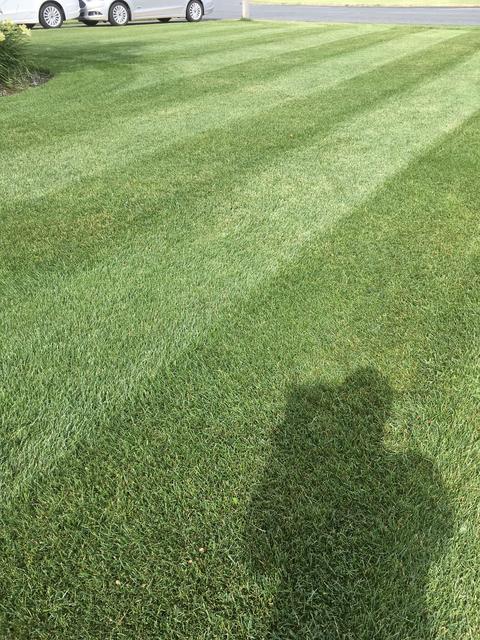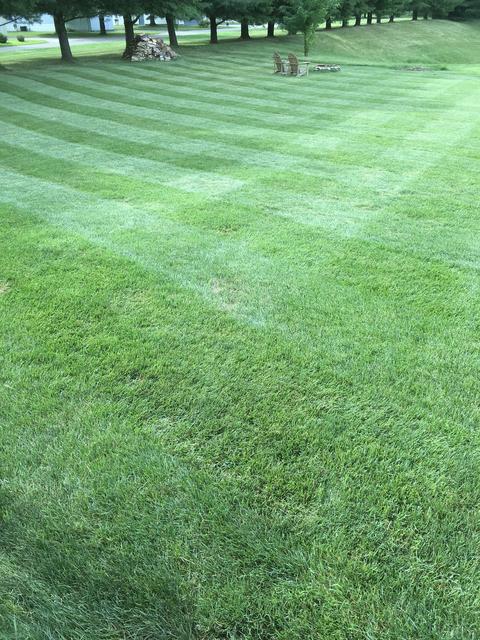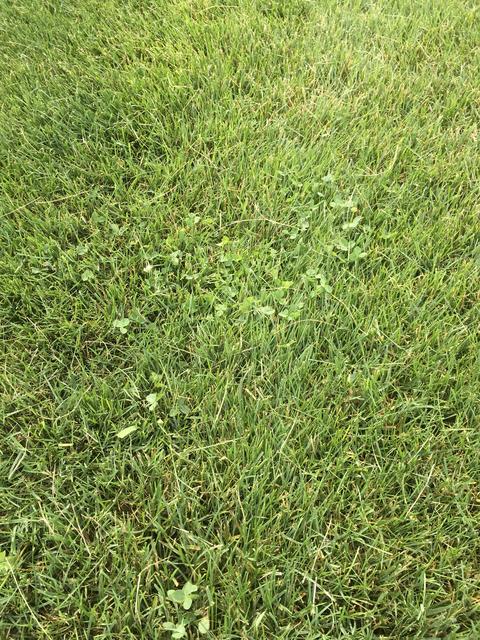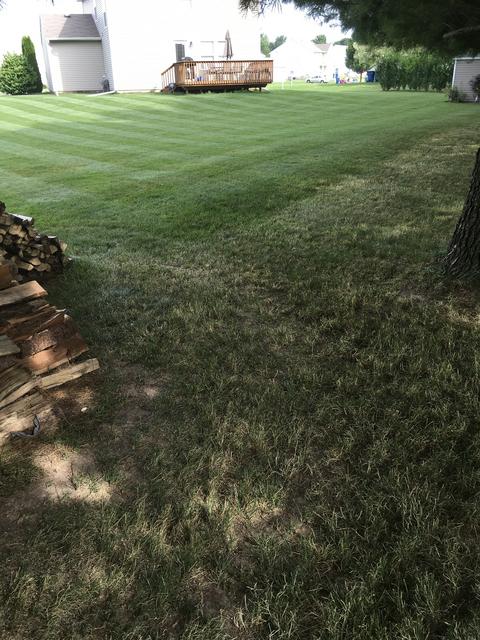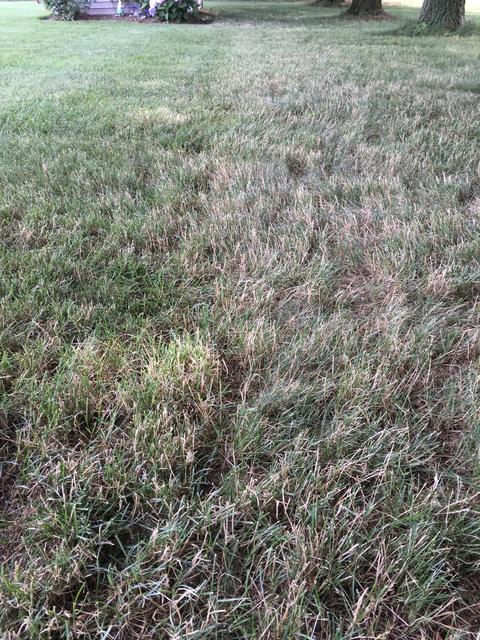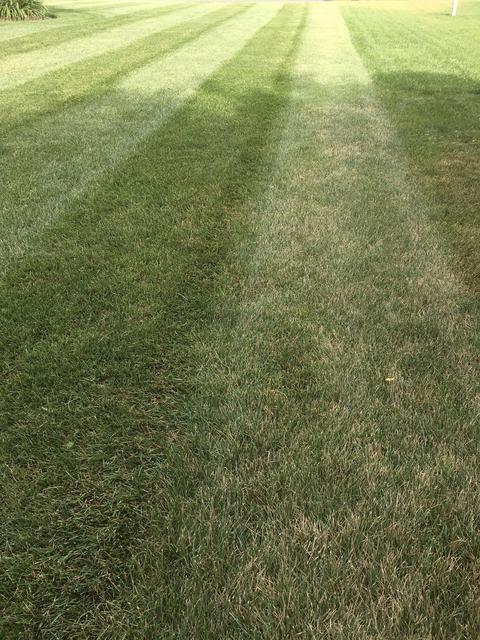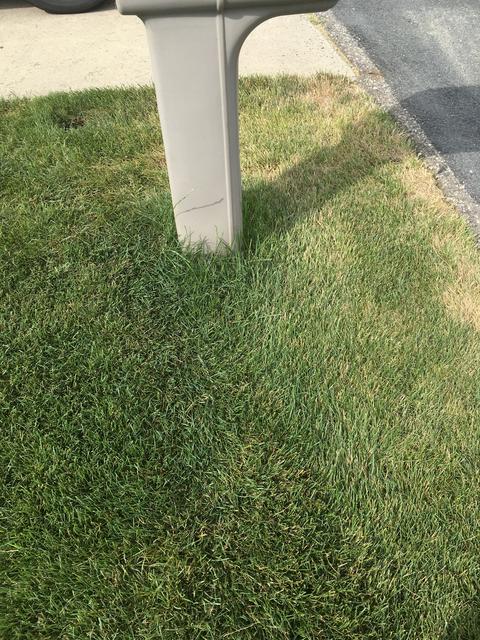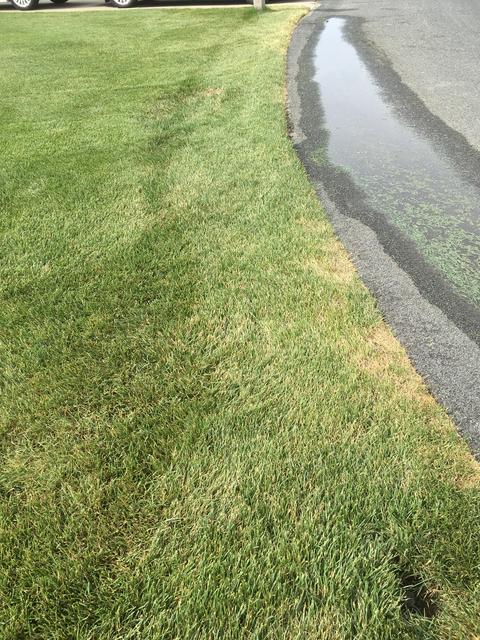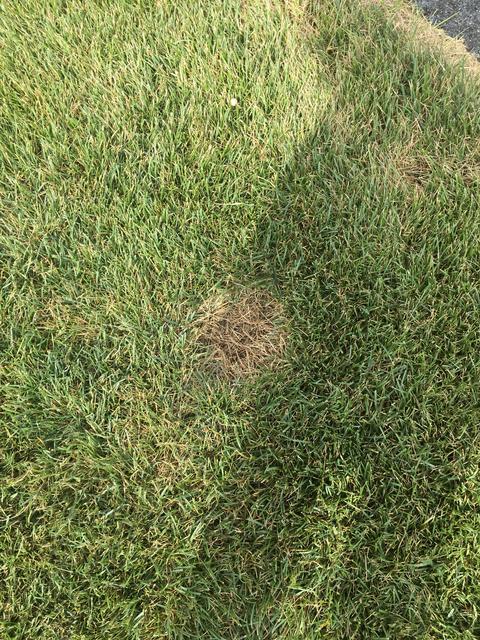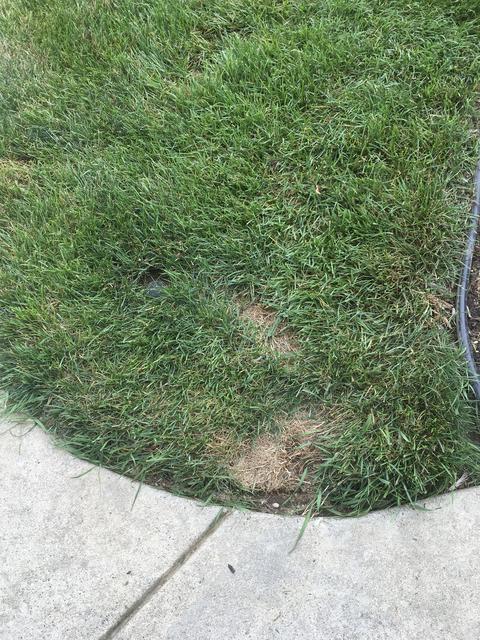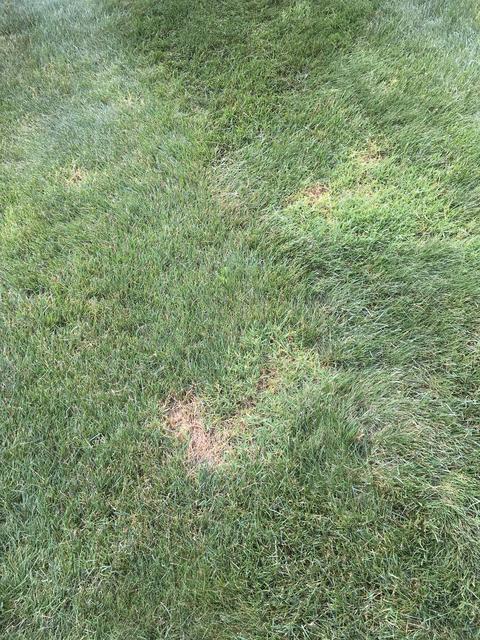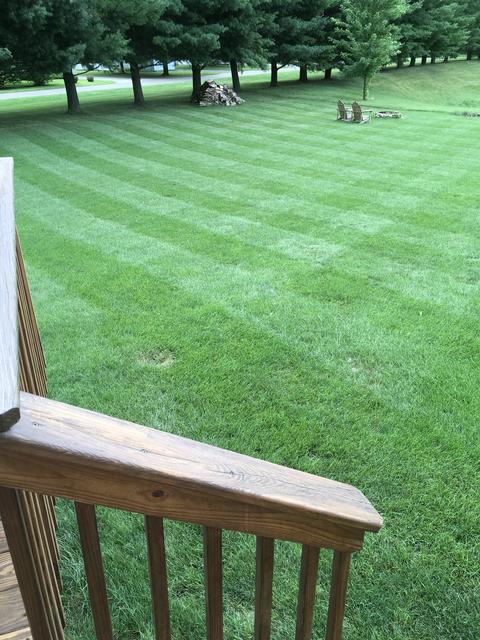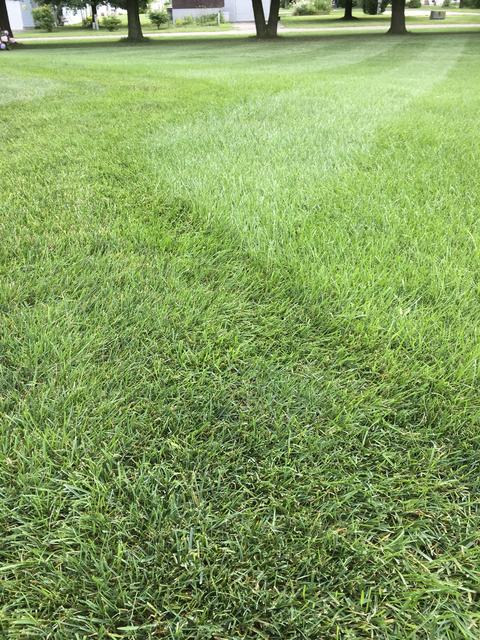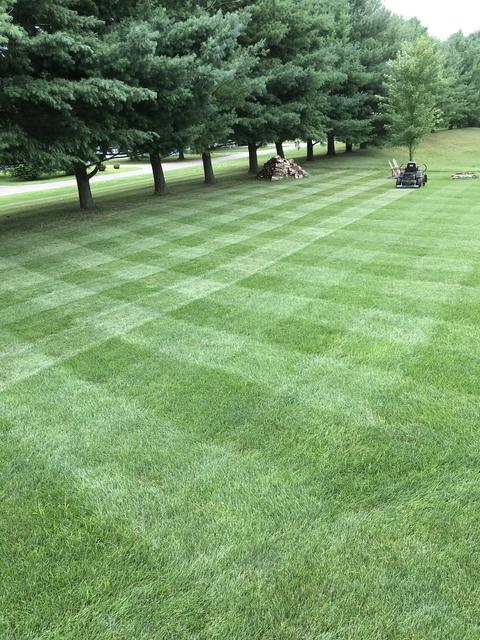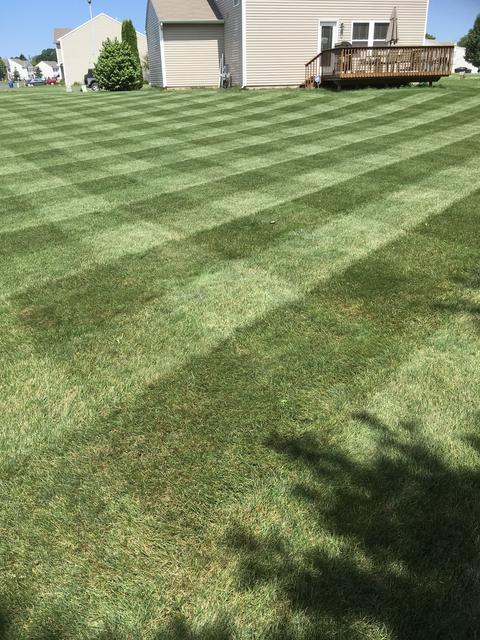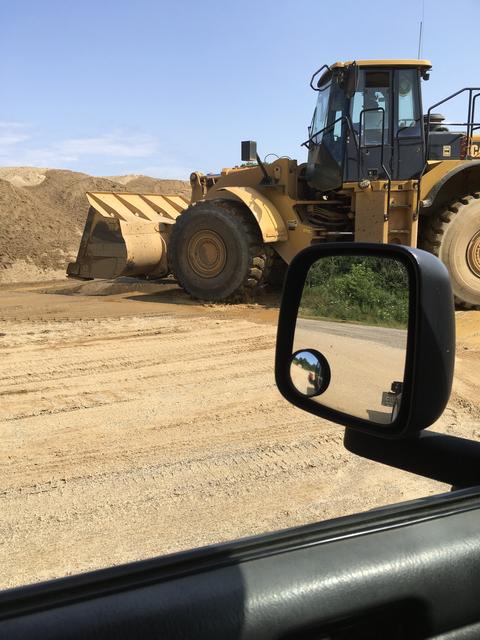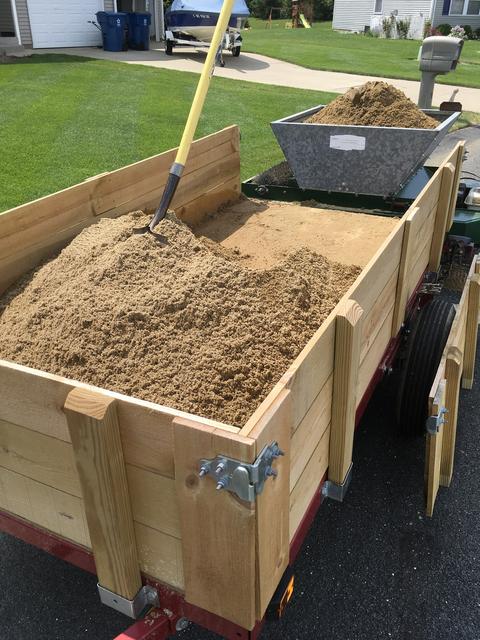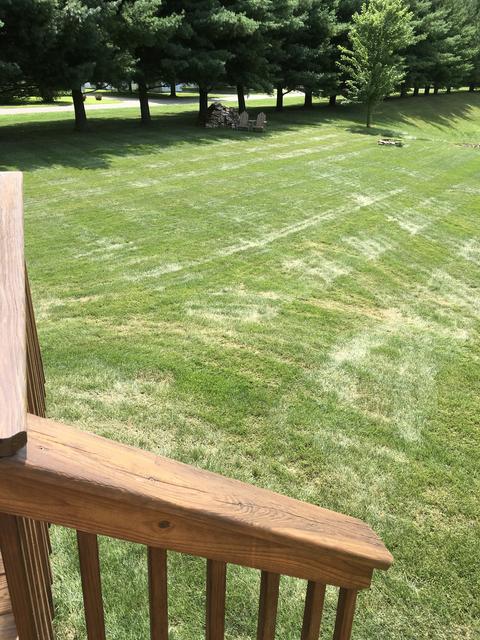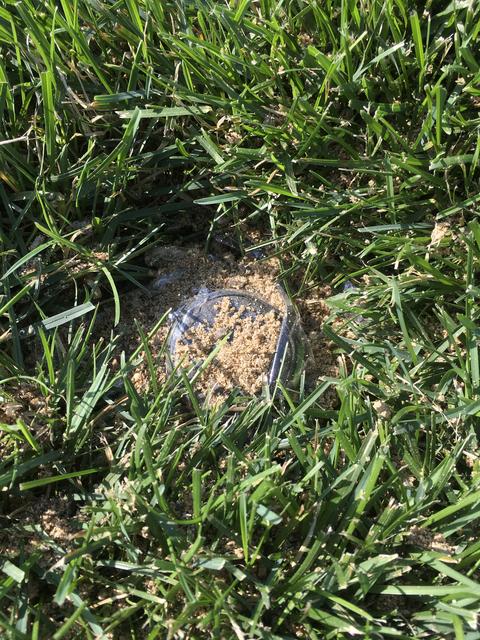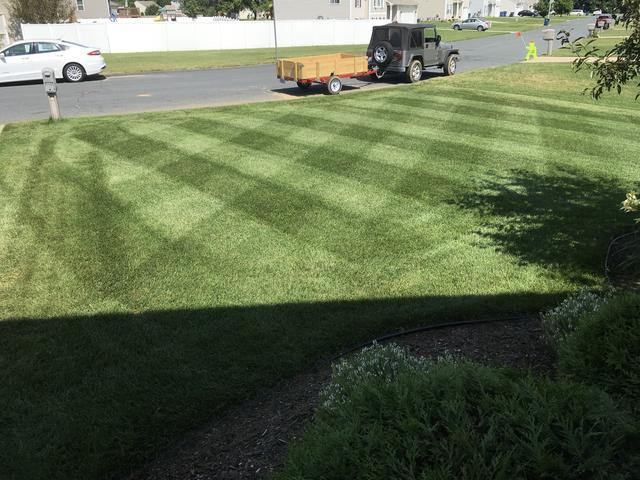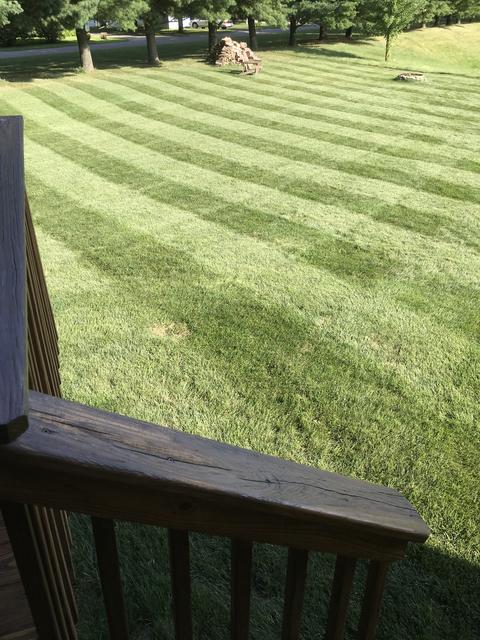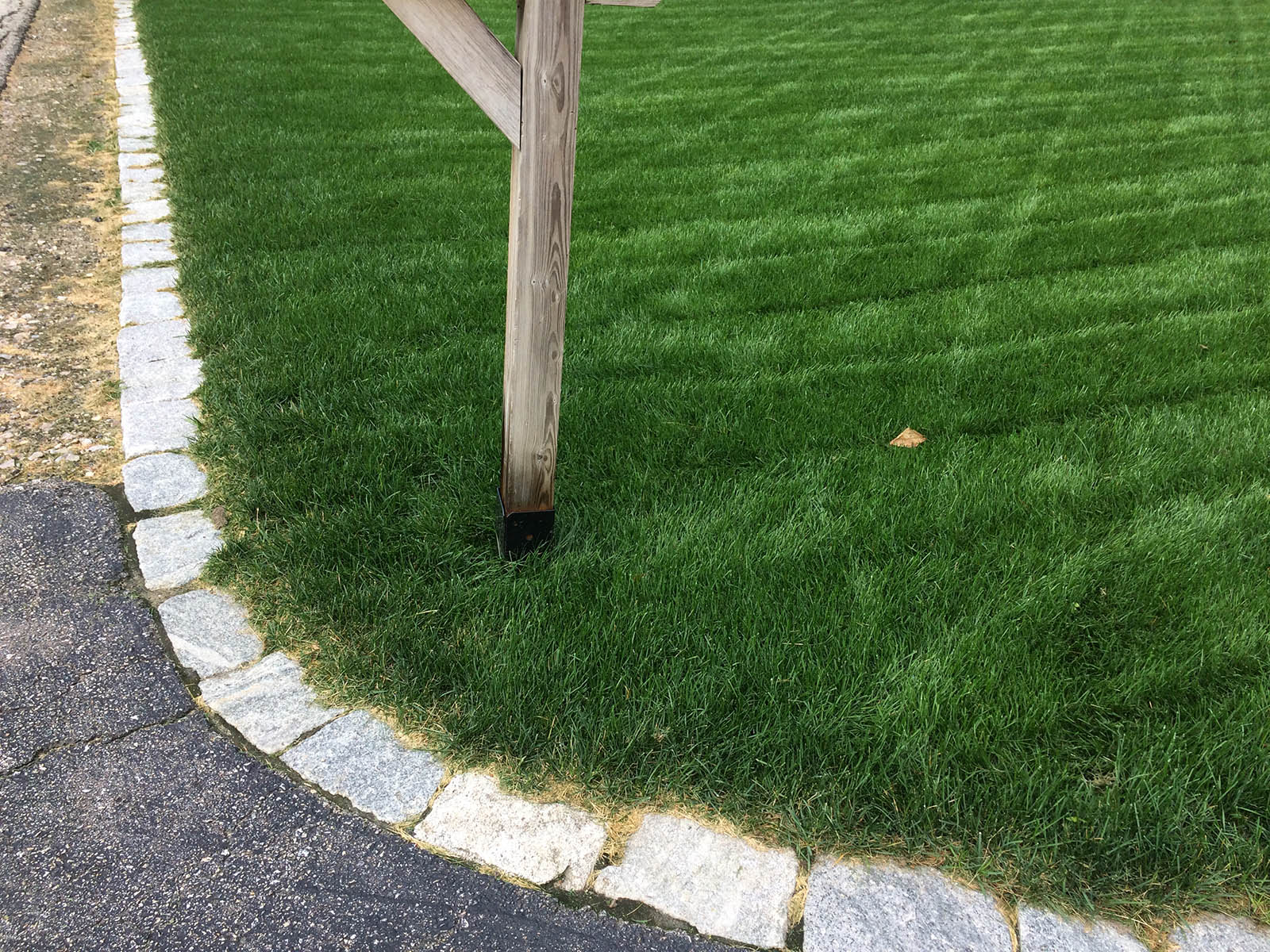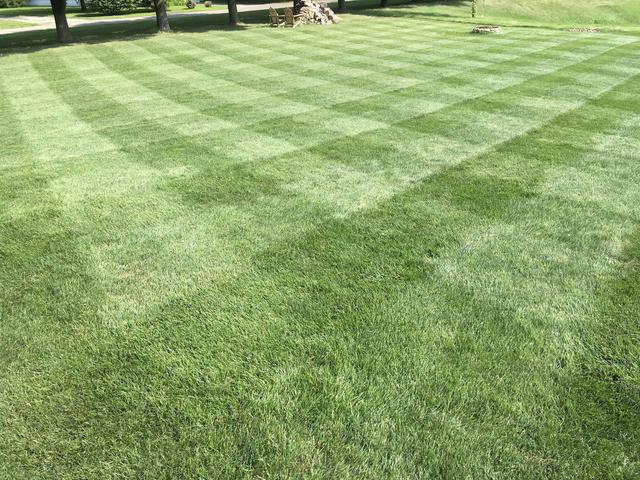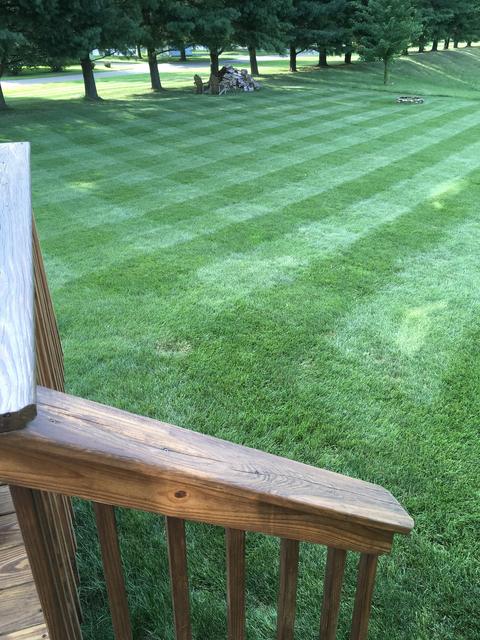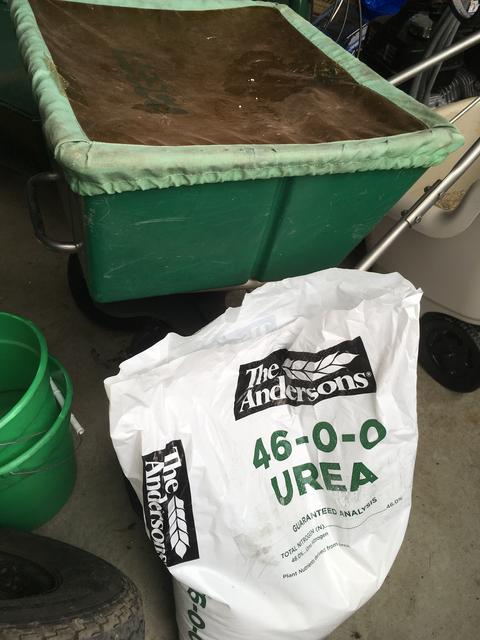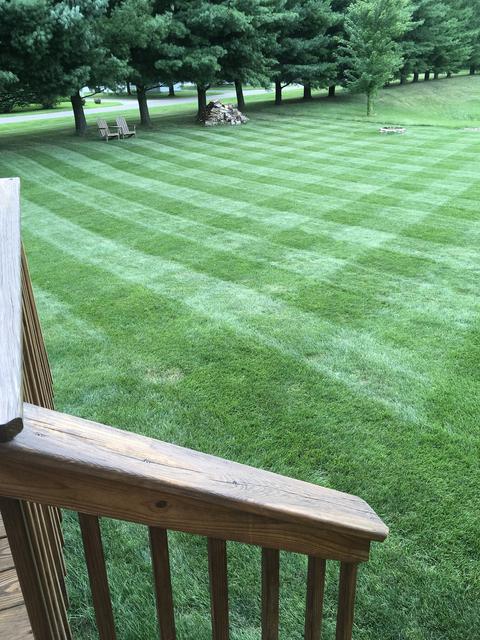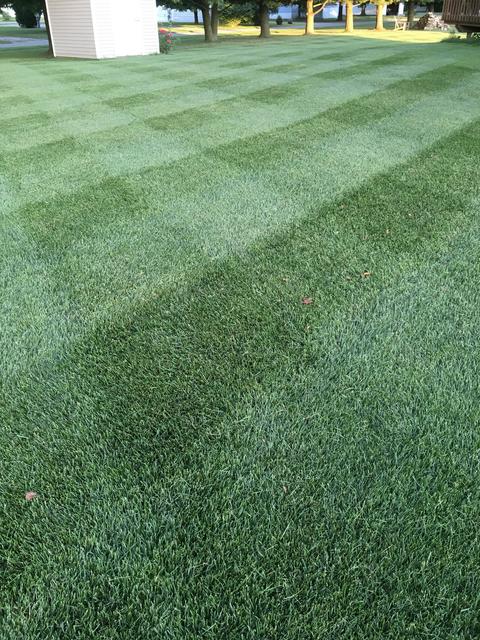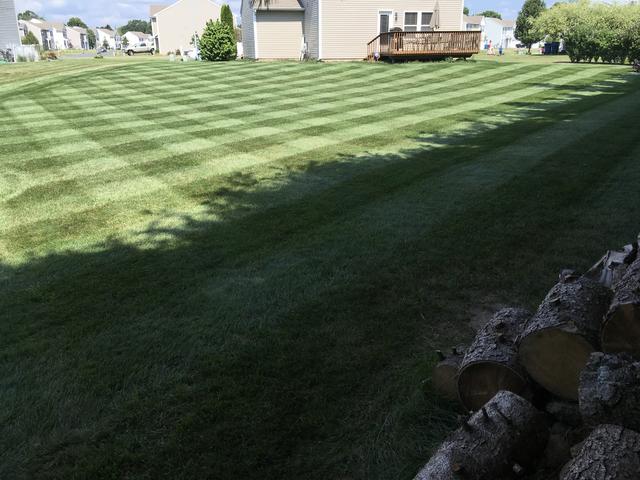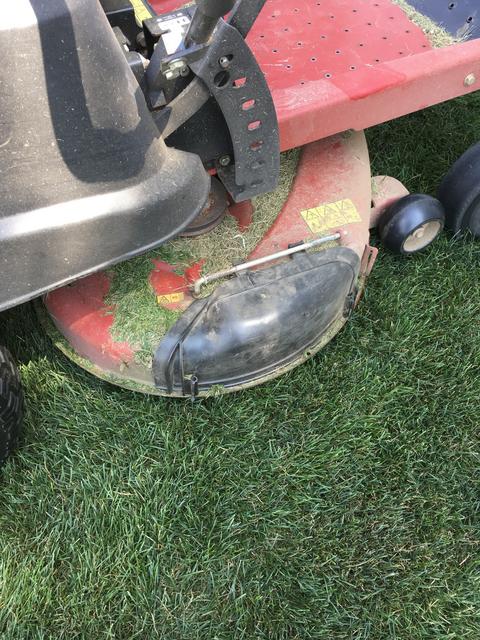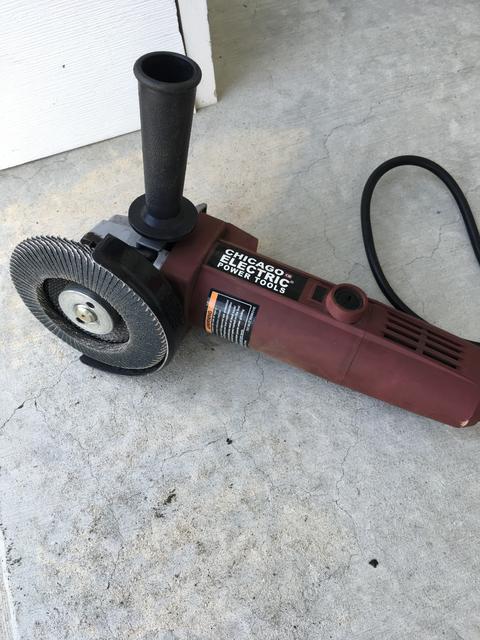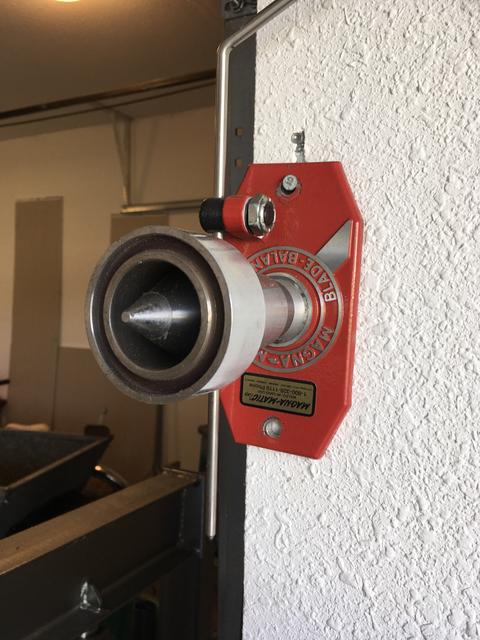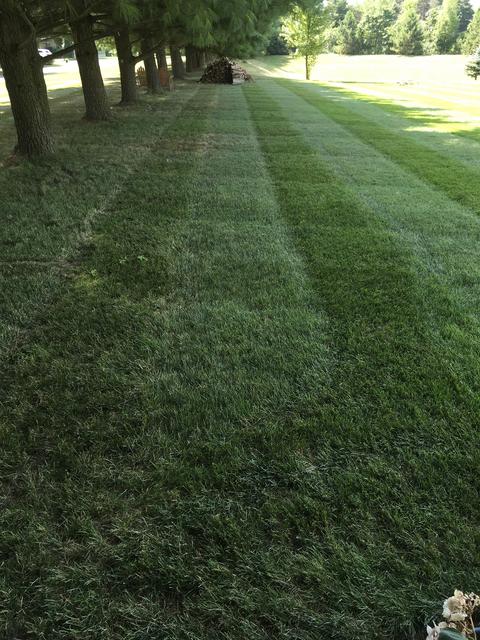Front was sodded new in 2007. Back was seeded (i think) and both were very poorly maintained. I started in 2010.
last year...
My lawn was pretty bumpy so I spent a lot of time an effort trying to level it with topsoil using a shovel, rake, and broom. Part of the problem was trenches from an irrigation system that I installed previously.
If I could do over, I would have killed the grass and leveled everything while installing the irrigation.
Here is a picture from April 23 after spreading the topsoil.
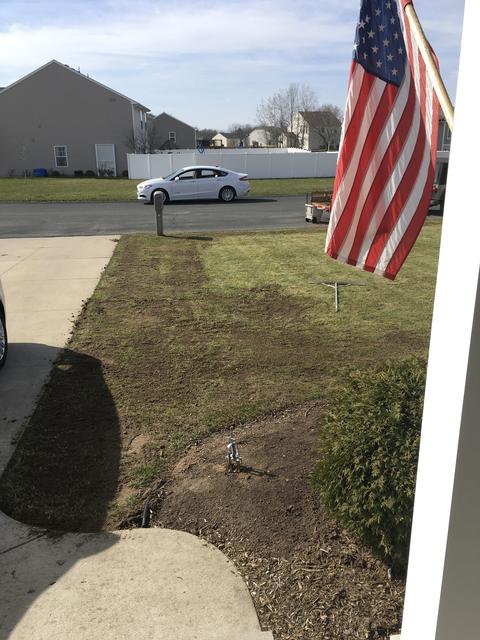
Then after working it in with a push broom (same date)
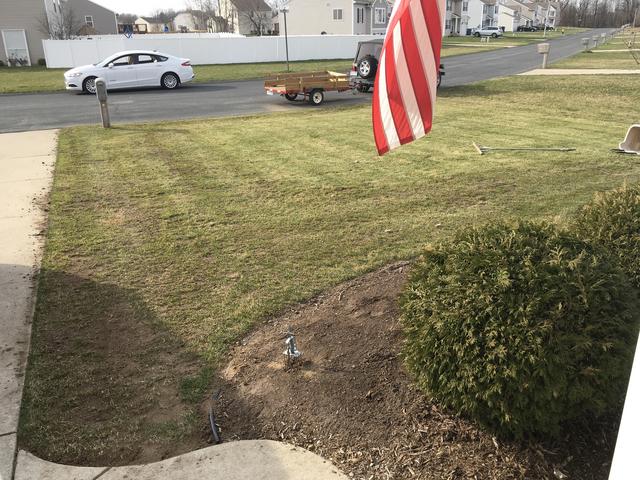
And two weeks later when the grass starts to pop from the spring. I think I had it mowed at 1.5" as low as my rotary would go to make spreading the dirt easier.
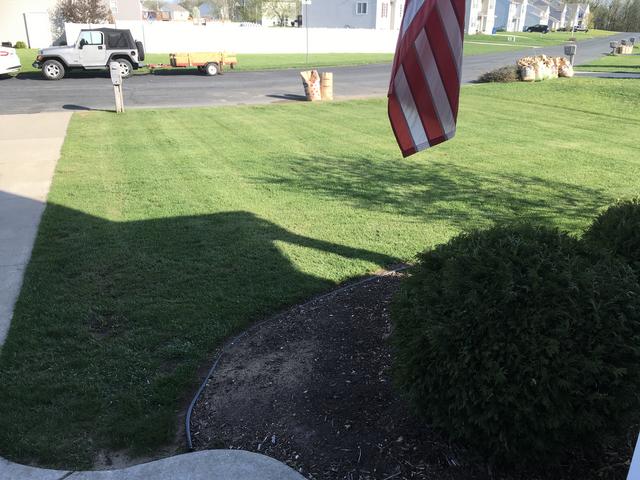
Another spot April 30, 2018. This was A LOT of work.
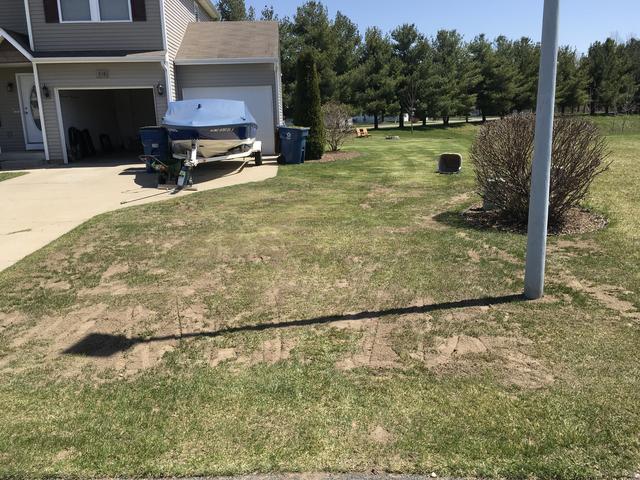
last year...
My lawn was pretty bumpy so I spent a lot of time an effort trying to level it with topsoil using a shovel, rake, and broom. Part of the problem was trenches from an irrigation system that I installed previously.
If I could do over, I would have killed the grass and leveled everything while installing the irrigation.
Here is a picture from April 23 after spreading the topsoil.

Then after working it in with a push broom (same date)

And two weeks later when the grass starts to pop from the spring. I think I had it mowed at 1.5" as low as my rotary would go to make spreading the dirt easier.

Another spot April 30, 2018. This was A LOT of work.



